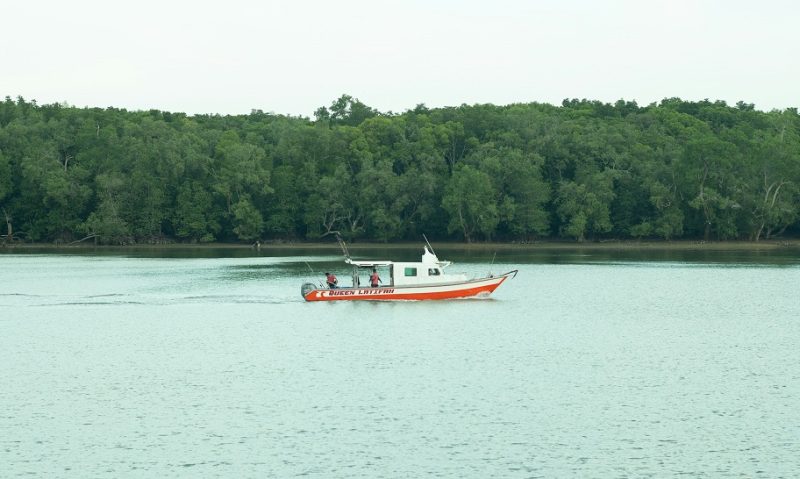Malaysia needs to fast-track rare earth elements industry blueprint
1 hour ago
It has been more than 15 years since the rare earth elements (REE) business landed in Kuantan. Though mired in unnecessary controversy, the Lynas facility has now been in operation for that long.
Few would dispute that the investment has contributed significantly to our gross domestic product (GDP), not to mention the economy of Kuantan.
All the critics have been silenced because their claims of health hazards are now effectively disproven. We wasted much time entertaining such misguided critics. In the meantime, the world is scrambling to source this rare metal, which finds wide use in many strategic products, including those related to the green economy.
China controls a major percentage of the supply. They have hinted that if the US proceeds with their intention to increase tariffs on Chinese imports, they may resort to even banning the export of some strategic metals, including the REE.
It is no secret that REEs are critical resources for renewable energy technology and the green economy. This makes them highly valuable. Malaysia’s REEs blueprint, which is as yet unveiled, will provide a framework to harness these resources responsibly.
REEs will build a downstream industry pivotal to the growing world demand for green products. At least three key ministries contributed to developing the plan – the Natural Resources and Environmental Sustainability Ministry, the Industry, Trade and Investment Ministry, and the Science, Technology and Innovation Ministry. We should not waste much time in executing the plan.
The aim should be to maximise its economic potential while minimising environmental and social impacts. A governance structure is needed to drive and coordinate the plan. The palm oil industry model is worth looking at as a guide.
There are reasons why we should not delay. The surge in global demand is one. REEs are essential for high-tech industries, including semiconductors, electric vehicles, renewable energy technologies, and critical components of military hardware.
With global efforts to transition to green energy, demand is seen skyrocketing. Some are even frantically researching alternatives to REEs because of constrained supply. China dominates supply. There are geopolitical opportunities for Malaysia as well.
There is a chance for Malaysia to position itself as a significant player in the global REE supply chain, reducing dependence on dominant producers like China.
REEs undoubtedly provide our chance for economic diversification. Our oil and gas deposits may not last much longer. As Malaysia moves towards a knowledge-based economy, REE exploitation offers a path for industrial growth and technological advancement.
Properly managed REE projects can stimulate economic activity in less-developed areas, creating skilled job opportunities. Responsible REE management is important. It should align with Malaysia’s commitment to sustainability and achieving carbon-neutral goals by 2050. What then are the key action points?
We need to strengthen our policy framework and finalise clear regulations for exploration, extraction, and processing to avoid delays. In today’s business world, it is important to ensure compliance with environmental, social, and governance (ESG) standards.
We have to invest in technology and expertise. Local expertise can be built through academic-industry partnerships and investment in research and development for cleaner and more efficient REE extraction technologies.
We need to mobilise investments. We can offer incentives to attract foreign direct investment while protecting local interests. We must ensure that communities near REE extraction sites are included in decision-making.
We must provide fair compensation and sustainable development benefits to affected areas. An independent body to monitor compliance and progress should be established. Furthermore, we should clearly and effectively communicate the data on environmental and economic impacts to build trust.
Partnering with countries that have advanced REE industries will help us gain technical know-how. We should also leverage international agreements to secure market access.
There are challenges. Environmental concerns must be addressed. REE mining is resource-intensive and can cause significant ecological damage if mismanaged. We need to develop sustainable methods to mitigate harm.
Regulatory bottlenecks are also a challenge. We must streamline bureaucratic processes to avoid project delays and align exploitation efforts with Malaysia’s Sustainable Development Goals (SDGs).
By accelerating the execution of the REE blueprint, Malaysia can harness these critical resources to strengthen its economy and align with global sustainability goals, ensuring a balanced approach to growth and environmental stewardship.
Professor Dato Dr Ahmad Ibrahim is an Associate Fellow at the Ungku Aziz Centre for Development Studies (UAC), Universiti Malaya.
The views expressed here are the personal opinion of the writer and do not necessarily represent that of Twentytwo13.
...Read the fullstory
It's better on the More. News app
✅ It’s fast
✅ It’s easy to use
✅ It’s free









